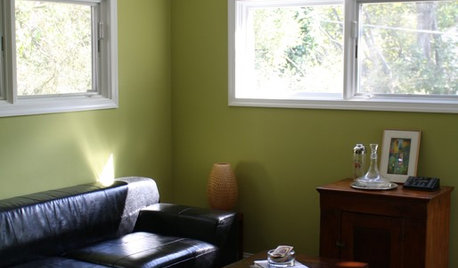Hello everyone
My name is Ludi, I am new to this forum. Over the past couple of days I have been reading through all the various posts and have been amazed at the knowledge you all have for ID'ing. I aspire to one day be as savvy as you all So I finally mustered up the courage to introduce myself and offer up an ID challenge.
The back story:
I moved into my boyfriend's house about 2 years ago and he had been living here for almost 6 years. So 8 years total. There is evidence of previous landscaping from the original owners but nothing has been maintained so it is all overgrown and not very appealing at the moment. I have decided to take on the task of redoing the entire from yard over the next 5 years or so.
When diving into the overgrowth I found these three beautiful giant blue hostas. I have been a gardener all my life but never had the privilege of working with a shade garden until now. So when I saw these beauties I swooned and knew that these were not going anywhere. I will be ripping out a lot of other permanent shrubs and such to make way for a more cohesive design but the 'Big Blues' (as we have taken to calling them) are too awesome to disturb.
So in a nut shell the pictures include all three original clumps that were planted by the landscapers AT LEAST 8 years ago. They have been completely undisturbed for all 8 of those years.
I do plan to dig them up next spring and amend the clay underneath. I will be dividing them as well but keeping them in the same places they are. But I really just need to get under them and fix that nasty soil. So I figured, I would need to identify them now since they are showing full maturity characteristics. I am pretty sure once I break up the eyes they will go immature for a couple of years. Please correct me if I am wrong. I am still learning much about Hosta and would like to confirm if they will go immature once the mature clump is divided.
Here is the link to the 'Set' I made on Flickr. This album is just pictures of 'Big Blue'
http://www.flickr.com/photos/ludisia/sets/72157630358250554/
If you want to get a feel for the true scale of my front yard project (be warned - severely unattended plants � may not be suitable for children) click the link to my entire photostream to the right.
But I digress, back to business.
'Big Blue' specs:
I labeled the pictures to identify the three different clumps in the yard. I also put descriptions as well so please make sure you are not viewing in slide-show mode or you won't see them.
Leaf measurements present in photos as well as photo descriptions.
Big Blue #1 is the largest clump. It has nothing growing around it to obstruct the mound and is 6 ft in diameter. From crown to the top of the mound is about 2 ft. The scapes from ground to tip are 3 feet. This hosta is grown in filtered shade with patches of sunlight passing through the sycamores periodically throughout the day.
Big Blue #2 is grown in full shade. It is underneath a massively overgrown Rhody and Pieris. This plant has the largest leaf size of the three clumps and it's 'Blue' is the most prominent.
Big Blue #3 is grown in probably the most sunlight but the entire front yard is full shade to filtered shade all day. I wouldn't dare call it part shade, that would be overly generous.
It is an early bloomer and extremely fertile. We have tons of little babies all over the yard. The flowers are white. Usually blooming by the beginning of June, although we did have an early start to spring this year.
I have tried myself to identify the hosta from various online resources (hostalibrary � AHS database) and have suspected it could be one of the following:
Blue Cloud � only found this on hostalibrary � not registered on AHS � couldn't find any specs
Big and Blue
Big Daddy � I don't think it is Big Daddy because there isn't enough corrugation or seer suckering.
Blue Angel � From what I could tell Blue Angel tends to have predominantly longer pointier leaves and on my three there are some heart shaped and broad ovate leaves as well.
Blue Mammoth
Blue Umbrellas � Not sure that there is enough dooming or corrugation for Blue Umbrellas
Samual Blue � I think the leaves are too think to be Samual Blue and also I think Samual is a smaller blue than the others listed above ? Plus mine have a glaucous bloom and I am pretty sure Samual doesn't.
Please help me oh great Hosta Sages. :)
I look forward to your replies and am excited to join this community of hosta enthusiasts. With such a large area to be working with I will have plenty more pics to come and a lot of space for more hostas.
Thanks again in advance for your help ^^
Ludi

















alexis717_df
Steve Massachusetts
Related Discussions
Please help ID this hosta
Q
unknown hosta photo, please help me id
Q
The Tiniest Hosta . . . ID Needed Please
Q
Please, please.. oh hosta gods.. hosta ID
Q
ken_adrian Adrian MI cold Z5
Ludicious AcresOriginal Author
Ludicious AcresOriginal Author
Ludicious AcresOriginal Author
Steve Massachusetts
Ludicious AcresOriginal Author
User
Ludicious AcresOriginal Author
tsugajunkie z5 SE WI ♱